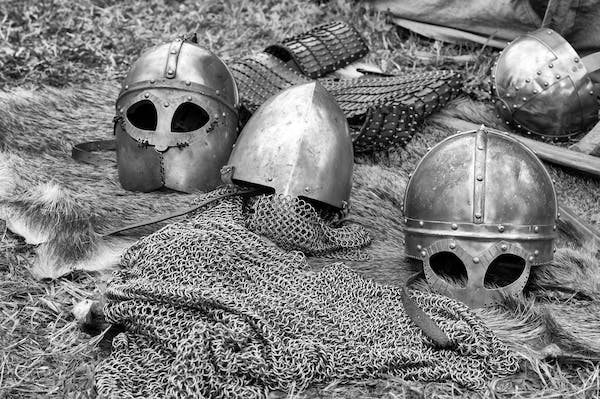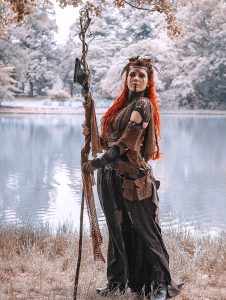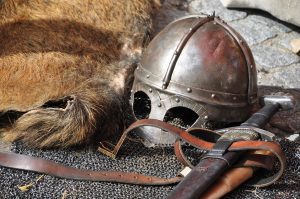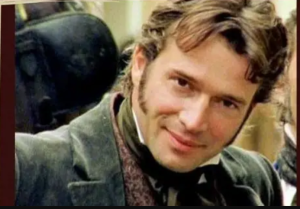CHIVALRY AND CHIVALRIC POETRY
This article deals with chivalry and chivalric poetry of middle ages.

Chivalry is a code of conduct associated with the medieval institution of knighthood. It evolved in the context of the European feudal system, particularly during the 12th and 13th centuries. Chivalry encompassed a set of ideals and virtues that knights were expected to uphold in their behavior both on and off the battlefield. While the specific code could vary, certain common principles were generally associated with chivalry:
Principles of Chivalry
- Courage: Knights were expected to display bravery and fearlessness in the face of danger. This included not only physical courage in battle but also moral courage in upholding justice and righteousness.
- Honor: The concept of honor was central to chivalry. Knights were expected to maintain their personal honor and the honor of their families and lords. This often involved adhering to a strict moral and ethical code.
- Loyalty: Loyalty was a crucial aspect of chivalry. Knights were expected to be loyal to their lord, to their comrades in arms, and to the code of chivalry itself. This loyalty extended to the defense of the helpless and the just treatment of prisoners.
- Courtesy: Chivalry emphasized the importance of courtesy and manners. Knights were expected to be gracious, respectful, and polite, especially in dealings with women and those of higher social rank.
- Nobility: Chivalry was closely associated with the nobility, and knights were expected to conduct themselves as noble individuals. This involved a sense of dignity, generosity, and a commitment to justice.
- Protection of the Weak: Knights were expected to defend the weak, including widows, orphans, and the poor. This aspect of chivalry often extended to the concept of courtly love, where knights were to serve and protect noble ladies.
- Skill in Combat: While not all knights were equally skilled in combat, proficiency in arms and horsemanship was generally expected. Knights were trained in the use of weapons and participated in tournaments and battles.
It’s important to note that while chivalry was an idealized code, the actual behavior of knights varied, and the code itself evolved over time. Chivalric ideals were often depicted in literature, particularly in chivalric romances and epic poems. Over the centuries, the concept of chivalry has become romanticized and is often associated with the notion of a “gentlemanly” code of conduct.
Chivalric poetry, also known as courtly poetry, was a significant genre in the literature of the Middle Ages. It emerged during the medieval period and was closely associated with the code of chivalry and the ideals of courtly love. Here are some key features and examples of chivalric poetry:
Key Features of Chivalric Poetry
1. Chivalric Themes
- Code of Chivalry: Chivalric poetry often revolved around the ideals of chivalry, which included virtues such as courage, honor, loyalty, and gallantry. Knights were expected to uphold this code in their conduct on and off the battlefield.
- Courtly Love: A central theme in chivalric poetry was courtly love, an idealized and often unattainable form of love between a knight and a noble lady. The knight would express his devotion through poetry and perform heroic deeds in the name of his beloved.
2. Chivalric Poetry Forms
- Romances: Chivalric romances were narrative poems that told tales of knights and their adventures. These stories often included elements of fantasy, such as quests, magical creatures, and encounters with the supernatural.
- Lay: A lay is a short narrative poem often focusing on themes of love and chivalry. It was typically sung or recited.
3. Notable Examples
- “Sir Gawain and the Green Knight”: This Middle English poem, written anonymously, is a chivalric romance that tells the story of Sir Gawain, a knight of the Round Table, and his encounter with the mysterious Green Knight.
- “Le Morte d’Arthur” by Sir Thomas Malory: This prose work compiles various Arthurian legends, providing a comprehensive narrative of the Knights of the Round Table and their quests. It is a key text in the chivalric tradition.
4. Courtly Love Poetry
- Sonnet Sequences: Chivalric poets often composed sonnet sequences expressing the complex and often unrequited nature of courtly love. These sequences explored the emotional and psychological aspects of love.
- Lyric Poetry: Chivalric poets also wrote shorter lyric poems, expressing the yearnings and emotions of the knight in love.
5. Influence on Culture
- Cultural Ideal: Chivalric poetry played a crucial role in shaping the cultural ideal of the medieval knight. It influenced not only literature but also the conduct of knights in real-life tournaments and battles.
- Cultural Legacy: The chivalric tradition left a lasting legacy, influencing later literature, including the Renaissance romance tradition and the development of the novel.
Chivalric poetry reflected the values and aspirations of medieval society, offering a blend of adventure, honor, and the intricacies of courtly love. It remains a significant and enduring part of medieval literature.
Read More
Visit Us on our Facebook Page:





